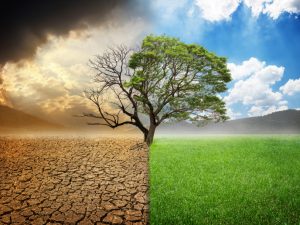Green Biotechnology
Green Biotechnology is ushering in a revolution in agriculture, fundamentally transforming the way we farm. This innovative approach is not just a buzzword; it represents a powerful shift towards sustainability. Green Biotechnology addresses the critical challenges of food security and environmental conservation by combining science and innovation. It reimagines traditional agricultural practices, offering solutions that maximize resource efficiency and minimize environmental impact. This revolution in agriculture is more than just change; it’s a comprehensive overhaul of our conventional methods. Green Biotechnology is our toolkit for nurturing our planet’s well-being while ensuring a bountiful food supply.
Green Biotechnology: A Sustainable Approach
Green biotechnology, also known as agricultural biotechnology, is centered on leveraging biological processes and genetic engineering to enhance agricultural sustainability. Its applications span from crop improvement to resource optimization, all with the aim of making agriculture greener and more efficient. Also, read about Biotech Skills Development: Future of Biotechnology
Less Fuel Consumption on Farms
Modern agriculture heavily relies on fossil fuels for machinery and transportation. Green biotechnology seeks to reduce this dependency by developing crops that require less energy-intensive cultivation practices. These energy-efficient crops can help cut emissions and lower farming costs.
Carbon Sequestration
The agricultural sector has a unique opportunity to combat climate change by sequestering carbon in the soil. Some green biotechnological approaches focus on developing crops with extensive root systems that enhance carbon capture, reducing atmospheric carbon dioxide levels.
Reduced Fertilizer Use
Excessive fertilizer use can lead to soil and water pollution. Green biotechnology is working to create crops that efficiently utilize nutrients, reducing the need for synthetic fertilizers and mitigating the environmental impact.
Nitrogen Use Efficiency Technology
Nitrogen is a vital nutrient for plant growth, but its inefficient use can result in nitrogen runoff, causing water pollution. Green biotechnology is developing crops that optimize nitrogen uptake and utilization, reducing nitrogen waste.
Engineering Cereal Crops to Fix Their Own Nitrogen
Imagine crops that can extract nitrogen directly from the air, eliminating the need for nitrogen-based fertilizers altogether. This revolutionary approach to nitrogen fixation could reduce costs and environmental harm.
Crop Adaptation to Water Use Efficiency
In water-scarce regions, water-efficient crops are a necessity. Green biotechnology is working to enhance the ability of crops to thrive with minimal water, improving yields and resource conservation.
Minimising Water Loss from Agriculture
Green biotechnology is exploring ways to reduce water loss in irrigation systems. Techniques like precision agriculture and drought-resistant crop varieties can help conserve this precious resource.
Increased Photosynthetic Activity
Photosynthesis is the foundation of plant growth. By enhancing the photosynthetic efficiency of crops, green biotechnology aims to boost yields, reduce land use, and minimize the environmental footprint of agriculture. Discover more about Biotechnology in Medicine Benefits

Biofortification
Nutrient-rich crops are essential for addressing global malnutrition. Green biotechnology is enriching crops with vitamins and minerals, offering a sustainable solution to improve human health.
Combating Nutritional Deficiencies Through Biotechnology
In the quest to alleviate global malnutrition, biotechnology has emerged as a powerful ally. One of the pressing issues it addresses is vitamin A deficiency, which affects millions, particularly in developing regions. Through genetic modification, scientists have successfully engineered crops to become rich sources of essential vitamins and minerals, offering a sustainable solution to combat this deficiency.
Iron and Zinc-Rich Crops
Iron and zinc deficiencies are widespread health concerns, particularly in populations heavily dependent on cereal-based diets. To address this, biotechnologists have developed crops with enhanced iron and zinc content. These “biofortified” crops include rice, wheat, and maize, and they have the potential to improve the nutritional status of billions of people worldwide. By consuming these crops, individuals can increase their intake of these vital micronutrients without changing their dietary habits significantly.
Increased Folic Acid in Tomatoes
Folic acid, a B-vitamin, is crucial for human health, particularly during pregnancy. Its deficiency can lead to serious birth defects in developing foetuses. Scientists have harnessed biotechnology to increase folic acid levels in commonly consumed foods, such as tomatoes. This innovation not only promotes maternal and foetal health but also demonstrates the versatility of genetic modification in addressing specific health concerns.
Biotechnology’s role in addressing nutritional deficiencies is poised to become even more significant in the future. As technology advances and our understanding of plant genetics deepens, we can anticipate a broader range of biofortified crops and nutrient-enhanced foods. These innovations offer hope in the global fight against malnutrition, helping to ensure that all individuals have access to the essential vitamins and minerals necessary for a healthy life.
Nanotechnology
Nanotechnology plays a pivotal role in precision agriculture, where data-driven decision-making enhances crop management. Nanosensors, for instance, can monitor soil conditions, nutrient levels, and even plant health at the molecular level. This real-time data allows farmers to optimise irrigation, fertilisation, and pest control, reducing resource wastage and environmental impact.
Nanopesticides:
Conventional pesticides can be harmful to both the environment and human health. Nanopesticides, on the other hand, are designed to release their active ingredients slowly, targeting pests more effectively while minimising the quantity of chemicals used. This approach reduces the ecological footprint of agriculture and mitigates the risk of pesticide resistance.
Nanofertilizers:
Nanotechnology also offers a novel approach to nutrient delivery. Nanofertilizers encapsulate essential nutrients, such as nitrogen, phosphorus, and potassium, in nanoscale particles. This enhances nutrient uptake by plants, reduces fertiliser runoff, and promotes healthier, more productive crops.
Nanoencapsulation of Herbicides:
Herbicides are crucial for weed control, but they can also harm non-target plants. Nanoencapsulation allows for precise herbicide delivery, ensuring that the chemicals reach only the intended plants. This minimises collateral damage to neighbouring crops or the environment.
Disease Detection and Treatment:
Nanotechnology aids in the early detection of plant diseases and pests. Nanoscale biosensors can identify pathogens or insect infestations in real-time, enabling prompt and targeted responses, such as the application of specific treatments or biopesticides.
Improved Crop Traits:
Nanotechnology can also enhance crop genetics. Nanoparticles can deliver DNA or RNA molecules to plants, facilitating gene editing or the introduction of desirable traits, such as drought resistance or enhanced nutritional content.
Soil Remediation:
Nanomaterials are used for soil remediation to remove contaminants and improve soil quality. They can absorb heavy metals and pollutants, making previously unusable land arable again.

While nanotechnology holds great promise, it also raises concerns about safety, including the potential for nanomaterials to accumulate in the environment. Careful regulation and ongoing research into the environmental impact of nanotechnology in agriculture are essential to ensure its responsible and sustainable use. Nonetheless, it’s clear that the application of nanotechnology in agriculture has the potential to revolutionise the industry, making it more efficient, environmentally friendly, and resilient in the face of mounting global challenges.
Conclusion
Green biotechnology represents a pivotal moment in agriculture’s history, where science meets sustainability. Through innovations like nitrogen-fixing crops, carbon-sequestering plants, and water-efficient varieties, we have the tools to transform agriculture into a more environmentally friendly and productive endeavour. While challenges remain, the promise of green biotechnology offers hope for a future where we can nourish a growing global population while safeguarding the planet for generations to come. Embracing these technologies and practices is not only an option; it’s a necessity for the future of food and the health of our planet.
FAQ
- What is green biotechnology, and how does it differ from other branches of biotechnology?
Green biotechnology, also known as agricultural biotechnology, focuses on using biological techniques to improve crops and enhance agricultural sustainability. It differs from other branches by specifically targeting plant and crop-related issues, such as crop yield, resistance to pests and diseases, and environmental impact.
- How does green biotechnology combat nutritional deficiencies?
Green biotechnology addresses nutritional deficiencies by genetically modifying crops to be rich in essential nutrients like vitamins (e.g., vitamin A), minerals (e.g., iron and zinc), and other micronutrients. These biofortified crops provide a sustainable way to improve human nutrition.
- What are the benefits of iron and zinc-rich crops?
Iron and zinc-rich crops can help combat iron and zinc deficiencies, which are widespread health concerns. These biofortified crops provide a natural and sustainable source of these essential minerals, reducing the need for nutritional supplements and improving overall health, especially in communities with limited access to diverse diets.
- How does green biotechnology increase folic acid in tomatoes, and what are the health benefits?
Green biotechnology increases folic acid in tomatoes through genetic modification. Folic acid is essential for maternal and foetal health, and by enhancing its content in commonly consumed foods like tomatoes, it can contribute to preventing birth defects and supporting overall well-being.
- What role does nanotechnology play in agriculture?
Nanotechnology in agriculture involves the use of nanoscale materials and devices to improve various aspects of farming, including precision agriculture, pest and disease management, nutrient delivery, and soil remediation. Nanotechnology enhances resource efficiency, reduces environmental impact, and boosts crop yields.
